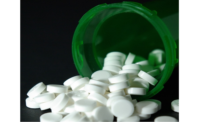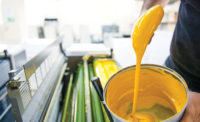Materials
The Role Sustainability Plays in Rigid Plastics
With its lightweight, recyclability and ability to form post-consumer resin, rigid plastic packaging offers many benefits.






The industry has experienced a lot of buzz, and even confusion, when it comes to packaging and sustainability in recent years. Schools of thought differ on the best materials to use, what happens at package end-of-life and even rigid packaging versus flexible packaging. When it comes to providing customers with the best possible package from a sustainability standpoint, the answer isn’t always black and white.
When it comes to selecting a package solution, function is at the top of the list for most customers. The product should perform in protecting the product inside, through supply chains and ultimately, on shelf. This can be achieved through a multitude of package options, but when it comes to what is most sustainable, what’s the answer?
First, let’s start with materials. Plastic packaging on average has a lower overall environmental impact than alternatives.
The next decision is rigid packaging versus flexible packaging. Pros and cons for each packaging type go on endlessly, but here are some main ones to consider:
Recyclability
Rigid plastics have an advantage over flexible packaging when it comes to recyclability. Ninety-four percent of the U.S. population has access to recycle rigid plastics, either through curbside or drop-off programs. And, 91% of the U.S. population has access to retail bag takeback programs, which are the primary outlet for recycling flexible plastics. But many more consumers take advantage of curbside recycling due to its convenience. As a result, recycling rates for rigid plastics are higher (18%) than for flexible plastics (13%), according to the latest figures from the EPA.
It is important to note that although the vast majority of the population has access to recycle flexible plastics through retail bag takeback programs, only PE films and bags — like HDPE grocery bags or PE bundling wrap — are accepted for recycling through these programs; whereas many flexible plastics are multi-material. Flexible packaging is making great strides when it comes to increasing recyclability, though. For example, Berry’s Entour™ flexible packaging films allow for a fully recyclable package that is compatible with in-store drop-off stream and also can provide barrier properties. The How2Recycle label is now making it easy to differentiate recyclable films from non-recyclable ones.
Recycled Material
The demand for adding post-consumer resin (PCR) into packaging is higher than ever. Most recycled content available comes from rigid packaging, but the ability to incorporate recycled content is not limited by the packaging format being rigid or flexible. It is however, limited by other factors — like PCR supply, manufacturing technology, regulatory approvals and customer specifications. It is very important to consider each of these factors when designing with recycled content.
Lightweight
One of the biggest benefits of plastic packaging is its lightweight. Plastic packaging weighs just a fraction of the weight of a comparable metal or glass package. When it comes to choosing which is more sustainable between rigid and flexible plastic packaging, we just can’t choose. Both have notable benefits of product performance, convenience, consumer safety and resource efficiency. As a leader in the space, our recommendation would be to evaluate more than simply the package format and instead, consider the full lifecycle of the package, including recyclability and availability of recycled content.
Looking for a reprint of this article?
From high-res PDFs to custom plaques, order your copy today!










